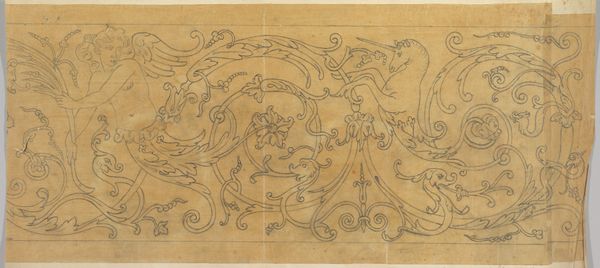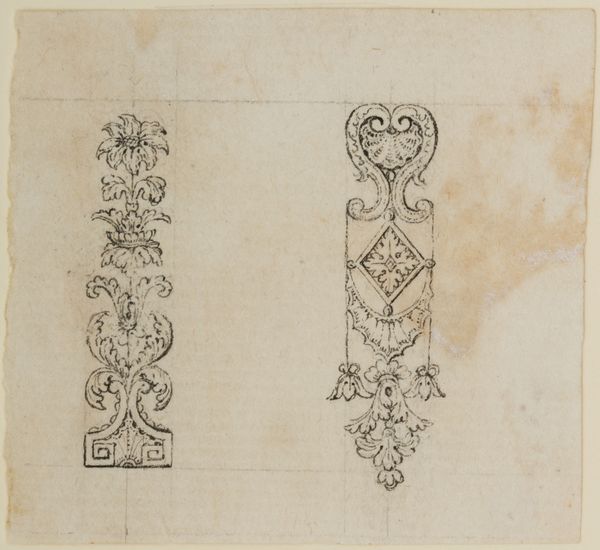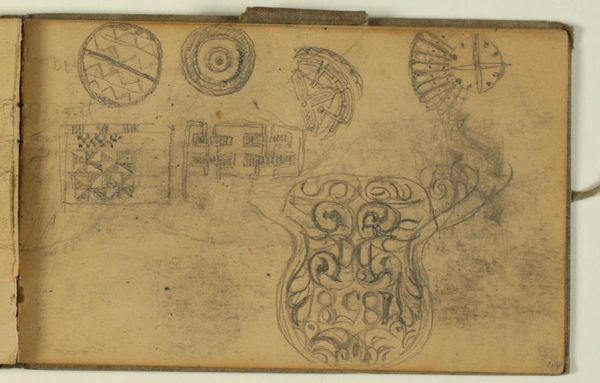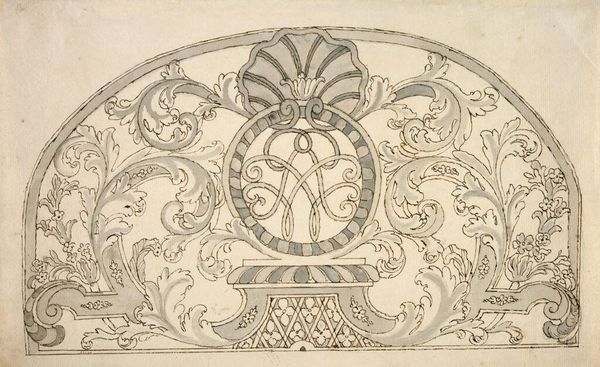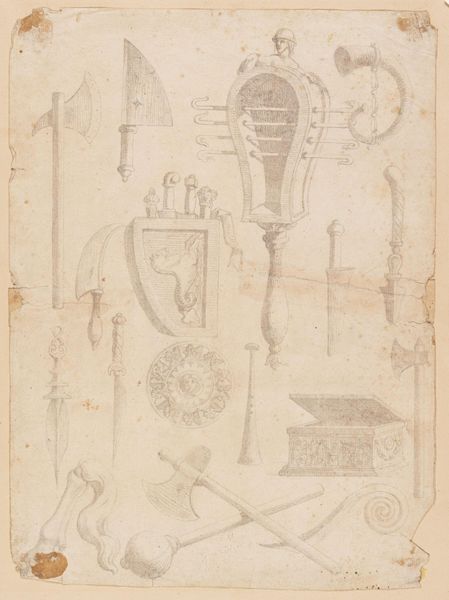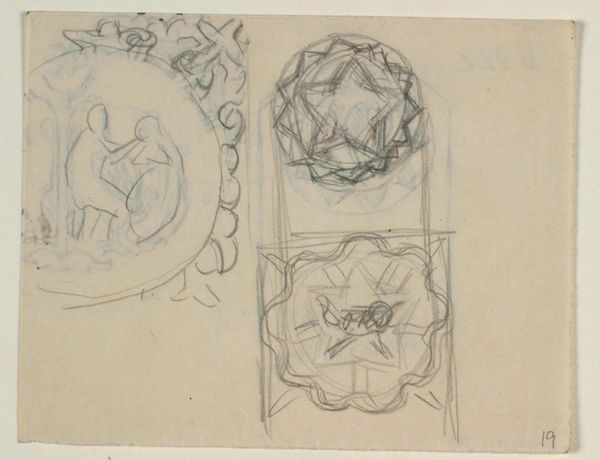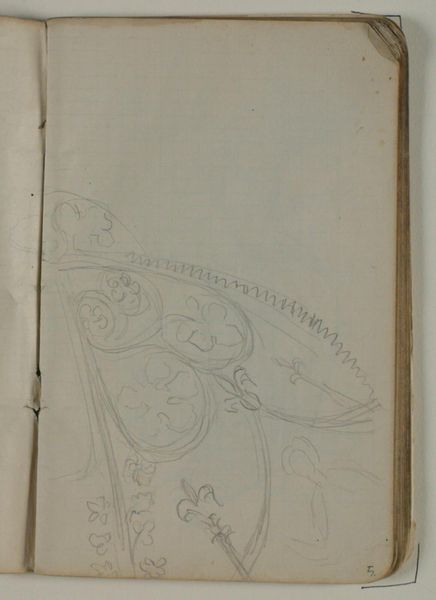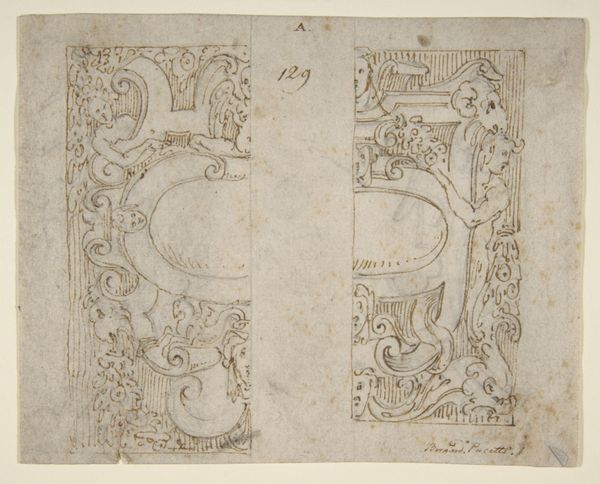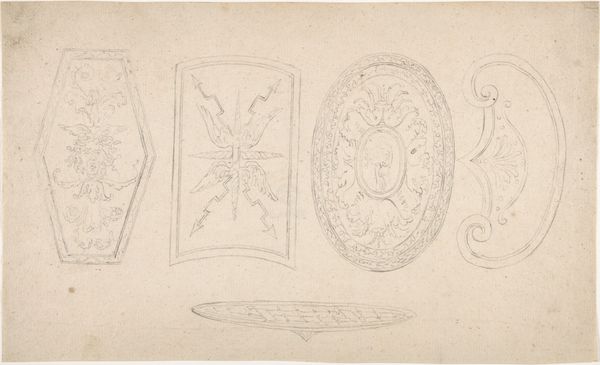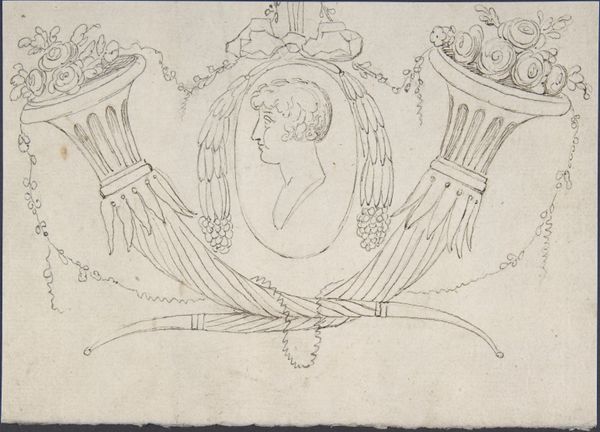
drawing, ornament, pencil
#
drawing
#
ornament
#
art-nouveau
#
coloured pencil
#
pencil
Dimensions: 114 mm (height) x 183 mm (width) x 9 mm (depth) (monteringsmaal), 113 mm (height) x 182 mm (width) (bladmaal)
Curator: Take a moment to consider "Ornamentstudier," or "Ornament Studies," created between 1900 and 1904 by Niels Larsen Stevns. It’s currently held at the SMK, the National Gallery of Denmark. It seems to be primarily pencil and colored pencil on paper. Editor: It feels almost like peeking into the artist’s private sketchbook. There’s an intimate, exploratory quality in these fragmented forms. Some are quite whimsical, almost playful. Curator: That intimacy speaks to the sketchbook tradition, where artists work through ideas. We can see how Art Nouveau floral motifs intersect with medieval-inspired symbols – notice the almost heraldic arrangement of elements, the wing motifs… there's a clear conversation with historical visual language. Editor: Yes, I'm struck by the variety. The angular geometric patterns alongside the organic, flowing curves. Are these preparatory sketches for a larger project, do you think? A commentary on ornament styles in general, or just experimenting with how to rework iconic visual imagery of the past? Curator: Precisely, understanding Stevns' context sheds light. Around 1900, there was a rediscovery and reinterpretation of historical artistic styles, a reflection of Danish cultural identity amidst broader European artistic movements. Stevns engages in this rediscovery, evident in his incorporation of Christian iconography and medieval design principles. The museum would have collected artifacts, photographs, publications that provided these ideas about an idealized past. Editor: So it’s not merely decorative; these drawings reflect the revival of interest in earlier symbols? The artist takes up these antiquated art languages, but how is this nostalgia reframed? It feels quite modern in its combination of all these styles, or at least progressive-minded at that moment. Curator: Stevns employs what we would now describe as 'pastiche', and that has resonance in contemporary culture today as people collage symbols of identity that reflect our individual and group personas. The heart, for example. It seems to have roots as the 'heart of Jesus' but takes on new secular symbolism today... This simple study opens to much deeper meanings for the contemporary viewer! Editor: I agree! “Ornamentstudier" invites a certain open ended conversation around continuity and our relationship to what comes before. Very well stated, it seems to me!
Comments
No comments
Be the first to comment and join the conversation on the ultimate creative platform.

